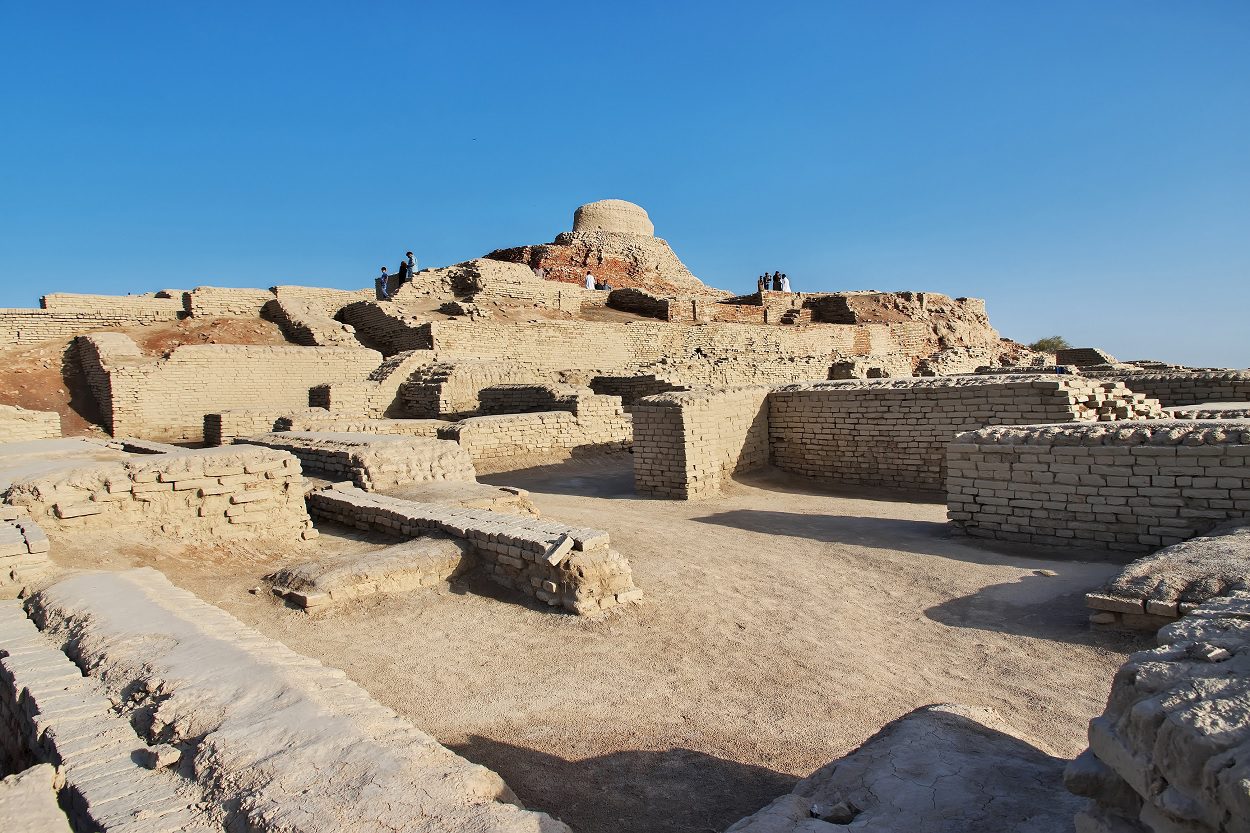A new study by the University of Cambridge has found new evidence locked away in stalagmite formations in a Himalayan cave, suggesting that the downfall of the Indus megacities was caused by periods of prolonged droughts.
The Indus Civilisation was a Bronze Age culture from 3300 BC to 1300 BC, that emerged in the alluvial plains of the Indus River system. At its peak, the civilisation covered an area that spanned much of Pakistan, northeast Afghanistan, and northwestern India.
The large megacities of the Indus are noted for their advanced urban planning, baked brick houses, elaborate drainage systems, water supply systems, clusters of large non-residential buildings, and techniques of handicraft and metallurgy.
Researchers examined growth layers in a stalagmites collected from a cave near Pithoragarh, India, which enabled them to chart historic rainfall by measuring a range of environmental tracers — including oxygen, carbon and calcium isotopes.
The study revealed three protracted droughts, each lasting between 25 and 90 years over a period of 200 years that started around 4,200 years ago. During this period, the city builders took various steps to adapt and remain sustainable against the climatic strain placed on the populations which coincides with the reorganisation of the metropolis planning.
Prof Cameron Petrie, from Cambridge’s Department of Archaeology, said: “During this transformation, larger urban sites were depopulated in favour of smaller rural settlements towards the eastern extent of the area occupied by Indus populations. At the same time, agriculture shifted towards reliance on summer-crops, especially drought-tolerant millets, and the population transitioned to a lifestyle that appears to have been more self-reliant.”
“We find clear evidence that this interval was not a short-term crisis but a progressive transformation of the environmental conditions in which Indus people lived,” added Petrie.
The team also identified distinct periods of below-average rainfall in both the summer and winter seasons. According to the researchers, the evidence for drought affecting both cropping seasons is extremely significant for understanding the impact of this period of climate change upon human populations. The droughts during this period increased in duration, to the point where the third would have been multi-generational in length.
Alena Giesche, from Cambridge’s Department of Earth Sciences, said: “The findings support existing evidence that the decline of the Indus megacities was linked to climate change. But what’s been a mystery until now is information on the drought duration and the season they happened in. That extra detail is really important when we consider cultural memory and how people make adaptations when faced with environmental change.”
The team are now looking to expand their climate reconstructions to western parts of the Indus River Region, where the winter rainfall system becomes more dominant than the Indian Summer Monsoon. “What we really need are more records like this, from a west-east oriented transect across the region where the summer and winter monsoons interact — and, crucially, capturing the beginning of this arid period,” said Giesche.
“Currently, we have a huge blind spot on our maps extending across Afghanistan and Pakistan where the Indian summer monsoon and the Westerlies interact,” said Prof. Sebastian Breitenbach, co-author and palaeoclimatologist at Northumbria University. “Sadly, the political situation is unlikely to allow for this kind of research in the near future.”
Header Image Credit : Shutterstock





